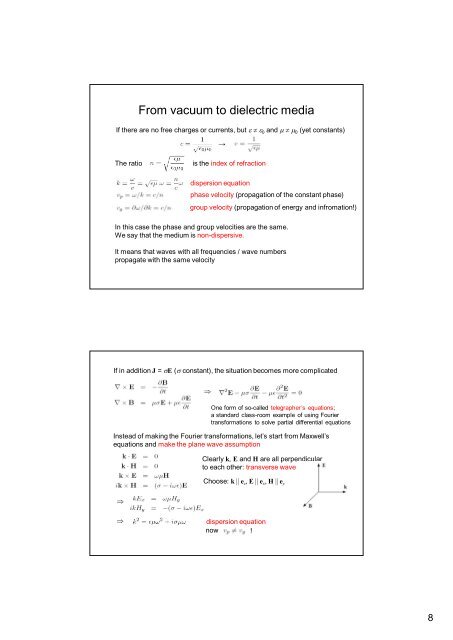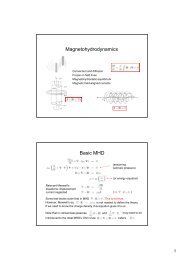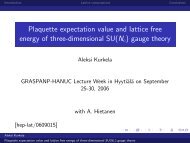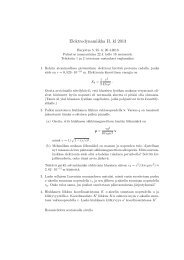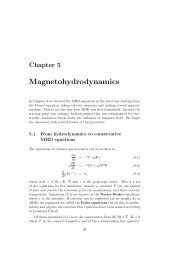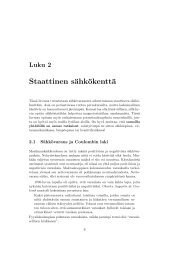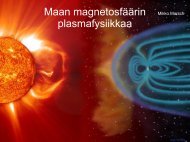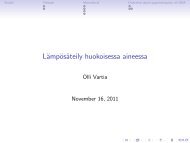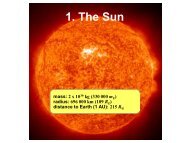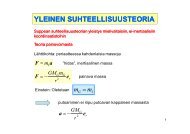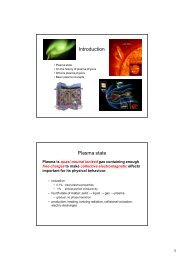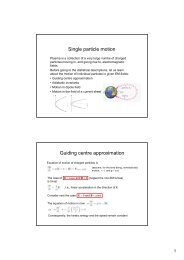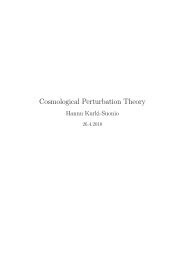Electrodynamics
Electrodynamics
Electrodynamics
You also want an ePaper? Increase the reach of your titles
YUMPU automatically turns print PDFs into web optimized ePapers that Google loves.
From vacuum to dielectric media<br />
If there are no free charges or currents, but 0 and 0 (yet constants)<br />
<br />
The ratio<br />
is the index of refraction<br />
dispersion equation<br />
phase velocity (propagation of the constant phase)<br />
group velocity (propagation of energy and infromation!)<br />
In this case the phase and group velocities are the same.<br />
We say that the medium is non-dispersive.<br />
It means that waves with all frequencies / wave numbers<br />
propagate with the same velocity<br />
If in addition J = E ( constant), the situation becomes more complicated<br />
<br />
One form of so-called telegrapher’s equations;<br />
a standard class-room example of using Fourier<br />
transformations to solve partial differential equations<br />
Instead of making the Fourier transformations, let’s start from Maxwell’s<br />
equations and make the plane wave assumption<br />
Clearly k, E and H are all perpendicular<br />
to each other: transverse wave<br />
Choose: k || e z , E || e x , H || e y<br />
<br />
<br />
dispersion equation<br />
now !<br />
8


